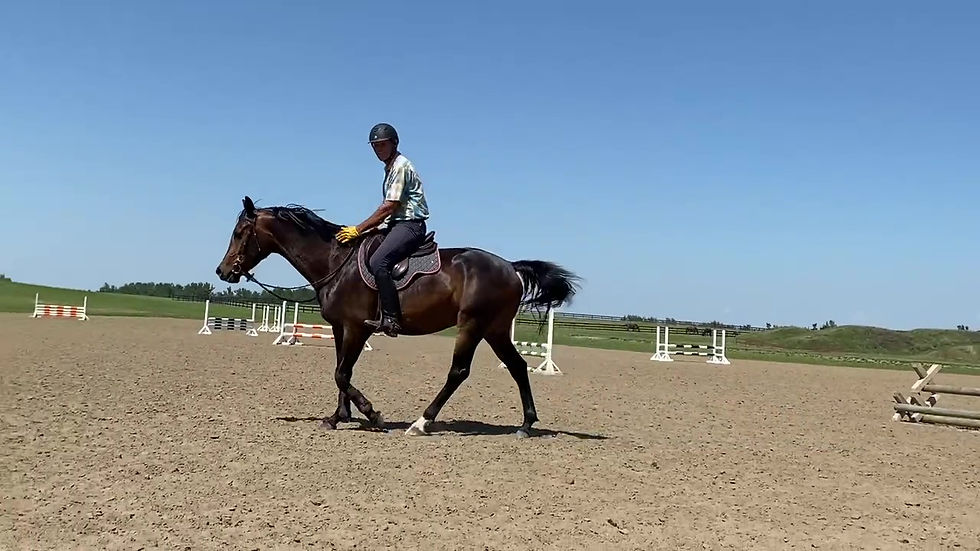Carry That Load
- phdevlin
- Jun 7, 2023
- 2 min read
We are taught to use our legs to lift heavy loads. Squat down and use the large muscles in our legs to save our backs from strain. We know this but forget it too often. Consider how teaching our horses to lift us in similar fashion is possible and desirable.
Not so much that our geometry is the same, but our physiological natures share similar constraints. Horses that perform in self-carriage under the skills of a good rider rarely have lameness. Self-carriage is the term we use when a horse is in balance under a rider. The term is insufficient and ought to reference the burden of the rider and the adaptation of the horse’s motor skills to accommodate this. A horse won’t fine tune this on their own which puts the responsibility for its development on their rider. We can accomplish many competitive feats without teaching our horse to do this, but there are negative consequences that build over time if we don’t.

Horses can be taught to engage their hind legs under their bodies to carry their burden without straining themselves. Once they learn, they can perform for many years past their prime providing us with years of enjoyment without the use of medication and therapies. The better a horse carries their rider, the sounder they remain. A recent high-level dressage clinic nearby was summarized by the clinician that the basics were missing from all the participants’ performances. Teaching carriage is the “basics” and we don’t see nearly enough of it.
The skill to jump a course fast or execute the movements of a dressage test is commendable, but to do these things whilst the horse is carrying is masterful. Teaching self-carriage or whatever you choose to name it is something that can be introduced from the very beginning. The capacity will develop over time and is not something for which you need to achieve a prerequisite condition before you begin, nor is it something that necessarily manifests itself as a condition of advancement.
Having an idea in our head that informs our efforts is how we learn. K. Anders Ericsson, an internationally recognized researcher in the psychological nature of expertise and human performance called this a mental representation. Changing our mental representation is a necessary component of learning new skills that move us closer to mastery. It requires we take time away from affirming what we understand and apply some of it to uncovering what we don’t.
Thinking about how our horses carry us is worth the effort. Applying what you come up with to your riding practice may even benefit your horse.




Comments